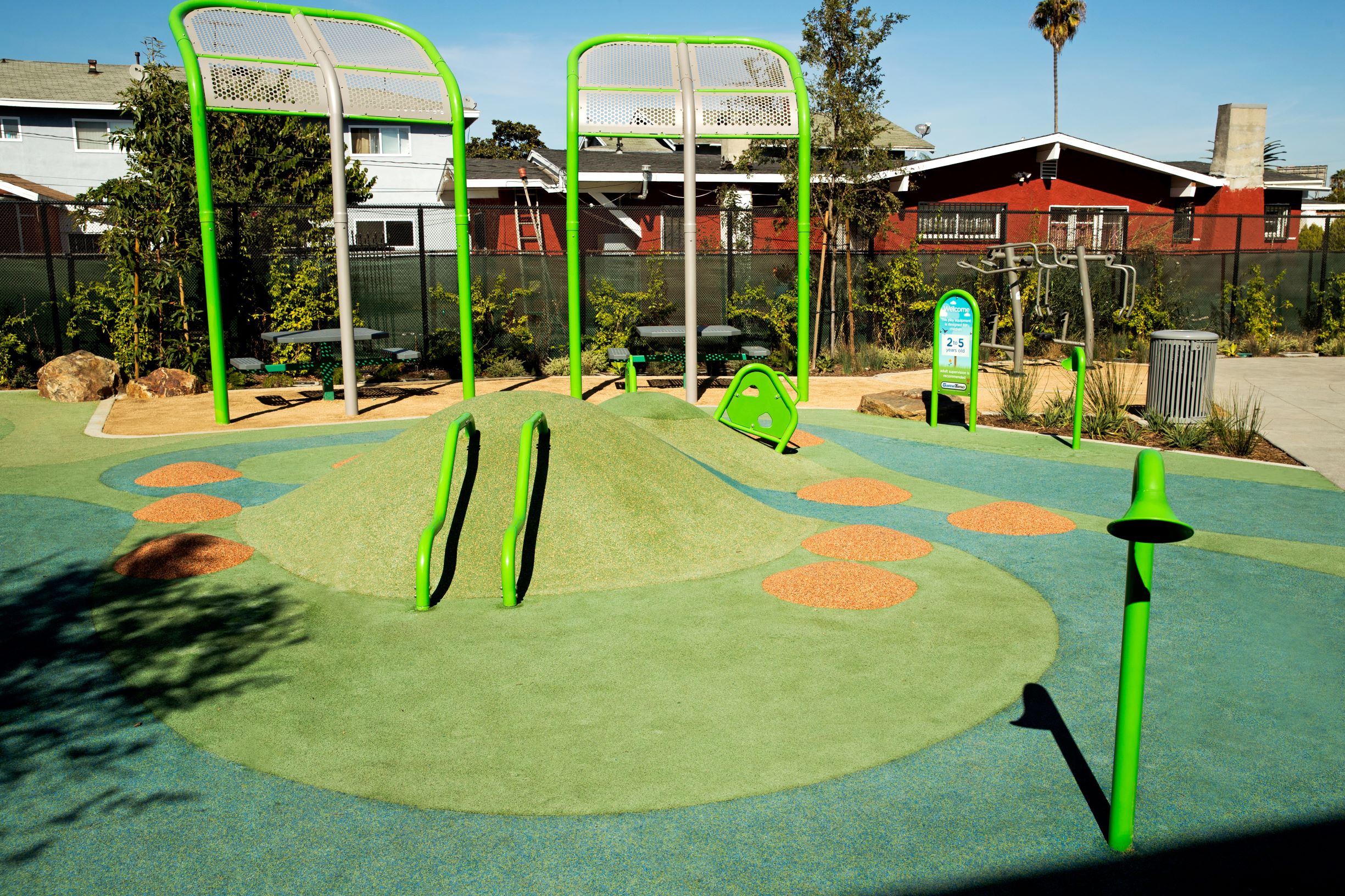When designing a playground, the goal is to make it fun, interesting and challenging for kids of all ages and abilities. By embracing the natural landscape and the unique topography of your site, you add interest and challenge to your design. Using existing grade changes, slopes or terraced elevations, you can create extraordinary play spaces achieving those one-of-a-kind playground experiences users will travel to see and want to visit again and again.
Let’s explore the benefits of utilizing topography in your commercial playground design, as well as some ideas for enhancing your play or fitness space.
Benefits of Leveraging Playground Topography
Topography refers to the physical features of an area of land. Some people assume that they need a flat open space to build a playground but this isn’t true. In fact, areas that have slopes and hills can be the perfect place to build a custom playground!

The advantages of using topography in your playground design are:
- Create a more exciting park or playground with one-of-a-kind of experiences users will want to visit again and again.
- Encourage kids to explore their natural surroundings and engage in unique play opportunities.
- Integrate the playground equipment into the topography of the site, such as climbing nets or installing a slide into a slope or hillside.
- Set your playground apart from others. Having slopes, hills, mounds, etc. creates opportunities for “new” play every time they return.
Tips for Using Topography in Your Playground Design
Some of the most common topography elements include berms, mounds and slopes. CR Studio Design is comfortable working with any of these elements. Here are some tips that we find to be most helpful when integrating topography into your play and fitness space:
Entrances and pathways
The natural topography of your site can be used to create safe, ADA compliant entrances, pathways and paved travel routes. Berms are commonly constructed to be able to access playground play structures. Be sure to provide an appropriate surface beneath the equipment, such as poured-in-place rubber or artificial playground turf. Pathways connecting play areas gives a finished look to your design and adds visual ques and appeal.
Hillside slides
Hill slides, or embankment slides, create wonderful play opportunities for kids. They do require some planning to ensure they are safe and meet the latest regulations. Generally, these slides do not need steps or ladders to access them making them even more safe. And who doesn’t love to go down a long slide.
Rope-based play & nets
Rope-based play and nets give designers the ability to embrace the natural landscape and utilize the occasional unusual topography. Because of their flexibility, they are a go-to for designers who want to foster imaginative play inside an artistic area that touts unique shapes, applications and elevations that only nets could provide. Ropes and nets designed for climbing also work well along slopes and connecting play components or play areas.
Mounds
Utilizing poured-in-place rubber, playground designers craft mounds to change the elevation of play areas. The mounds which are small hills, usually constructed of plastic or resin, covered with poured-in-place rubber. They visually resembled hills and offered unique climbing and play opportunities. Because poured-in-place rubber is highly customizable with colors and designs, playground mounds have become a popular way to diversity a space’s curb appeal.
Start Your Commercial Playground Design
Using the natural topography allows you to create unique play and fitness spaces that encourage unique outdoor recreational experiences. CR Studio Design can help determine what playful landscape elements will work well in your space and how you can use the existing topography to enhance your custom playground design. Contact us today to discuss your playground project.
